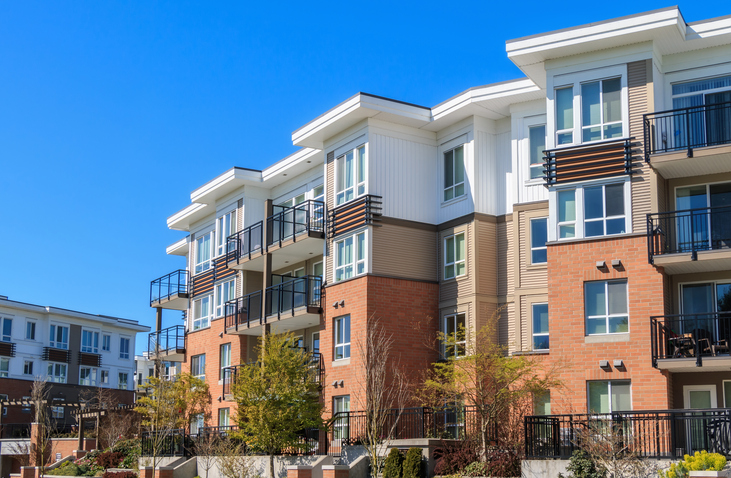Understanding the Agreed Value Option
Question: I have always understood Agreed Value to do away with the coinsurance clause. I have also understood it to stand alone, meaning no ACV or RC noted on the Dec. page for the particular item showing agreed value. Am I correct or mistaken? If I am correct in both instances, is it correct for the company to show either ACV or RC as well as coinsurance on the Dec. page?
QuestionI have always understood Agreed Value to do away with the coinsurance clause. I have also understood it to stand alone, meaning no ACV or RC noted on the Dec. page for the particular item showing agreed value. Am I correct or mistaken? If I am correct in both instances, is it correct for the company to show either ACV or RC as well as coinsurance on the Dec. page? The above is a question recently received by the Virtual University’s “Ask an Expert” service. The Agreed Value option in the Commercial Property Coverage Part is often misunderstood. It is, in a manner of speaking, effectively a 100% coinsurance requirement, though not really a coinsurance requirement since it waives the coinsurance requirement. Now that I’ve completely confused the issue… IF the insured fails to provide or maintain a limit equal to the agreed value, then coverage reverts to a coinsurance basis. The Coinsurance clause does not apply unless the expiration date for the Agreed Value (as shown on the Declarations page) is not extended…if this occurs, the Coinsurance condition is reinstated and valuation is exclusively based on that provided in the policy (e.g., ACV). In addition, an ACV or RC designation is necessary in order to establish the “default” valuation basis and to adjust partial losses. It is essential that the Agreed Value expiration date be the same as the policy expiration date or anniversary date, and the limit must equal the Agreed Amount. The coverage may have to be extended annually on the anniversary date of 3-year policies. Usually, the insured must file a Statement of Values with the insurer (e.g., CP 16 15) at least annually, certifying the ACV or RC of the property. So, there is a need to establish a “default” coinsurance percentage and valuation on the Declarations page. As long as the policy continues to be written on an Agreed Value basis and the limit equals the Agreed Value, there’s no problem. But, if this requirement is violated, the policy reverts to the coinsurance/valuation shown on the Dec page. Perhaps the following example will also help in clarifying the issue: Imagine this scenario: An insurance agent and a commercial building owner are discussing the values of a particular building during the negotiation of a new insurance policy. After some talking the agent says, “Well, let’s just write the same coverages that you have on your current policy with the other agent across town.” Based on this, $500,000 of building coverage is purchased and the policy declarations page shows an 80% coinsurance feature. During the insuring process the agent explains the coinsurance concept to the building owner and (humor us) everyone understands the provision. A few months later a major fire causes $200,000 damage to the building and the company adjuster visits the building owner to begin the loss adjustment process. A week or so passes and the adjuster contacts the building owner to advise that the building is significantly underinsured and a coinsurance penalty will be applied. It turns out that the actual replacement cost of the building was $800,000 and there will be a coinsurance penalty of almost $44,000 applied to the loss. After the $1,000 deductible is applied the building owner is paid $155,250 on his $200,000 claim: ($500,000/($800,000 x 80%)) x 200K = $156,250 – $1,000 = $155,250 He was fully expecting to receive a check for $199,000 and is extremely upset to say the least. In discussing the claim with his neighbor he learns that the neighbor’s agent used something called “agreed value.” Further, the neighbor said that if agreed value coverage is properly used, this whole coinsurance problem goes away if the proper conditions are met. It sounded pretty good to our building owner, who was left “holding the bag” to the tune of about $44,000. The neighbor is correct because, properly used, the agreed value option does eliminate the possible coinsurance penalty come claim time. The main problem with coinsurance is the calculations are made at or after the time of loss. At the time of writing the policy the insured really has no way of knowing for certain if he will suffer a coinsurance penalty. Going into the policy, the insured is estimating the building value based on best known data. Only when the company adjuster does the calculations of building value after the loss do we know for certain if the coverage purchased is adequate. The way around this “vast unknown” is to select the “agreed value” option on the declarations page. What agreed value does is establish to a value of the building at the time of purchasing the policy. (Personal property agreed value is also available but this article will use building coverage only to illustrate the concept.) It eliminates an insured saying, “I thought I bought enough insurance but after the claim I found out I was underinsured.” With agreed value the insurance company and insured agree at the time the policy is written that the values shown on the declarations page are accurate. Come claim time the only question to resolve is what’s due under the policy and there is no need to determine if the limits of insurance are in compliance with the coinsurance provision because coinsurance is suspended. There are dangers though. It’s important to understand that agreed value is not a way for an insured to intentionally underinsure a building. When agreed value is selected by simply checking the block on the declarations page (the actual agreed value endorsement disappeared with ISO simplification in 1986), there is a requirement that the insured submit a “Statement of Values” (SOV) by way of the CP 16 15endorsement. The SOV must reflect the full value of the building. If replacement cost settlement is indicated on the declarations page, then the full replacement cost of the building is shown on the SOV. If ACV loss settlement is used then 100% of the ACV of the building would be shown in the SOV. More importantly, the SOV must be accepted by the company as reflecting accurate values. For example, if the insured were to submit an SOV of $500,000 on an $800,000 building the insurance company would certainly reject the figures as not adequate. The SOV must be updated annually and, if that’s not accomplished, then the agreed value loss settlement no longer applies and coinsurance is reinstated. Also, if the insured purchases less insurance than shown in the SOV then the agreed value loss settlement does not apply and the coinsurance provision applies. Unintentional underinsurance can also result if the building values and SOV are not updated annually to reflect increased values. Here are the proper steps to use when agreed value coverage is desired:
|
Copyright © 2025, Big “I” Virtual University. All rights reserved. No part of this material may be used or reproduced in any manner without the prior written permission from Big “I” Virtual University. For further information, contact nancy.germond@iiaba.net.









